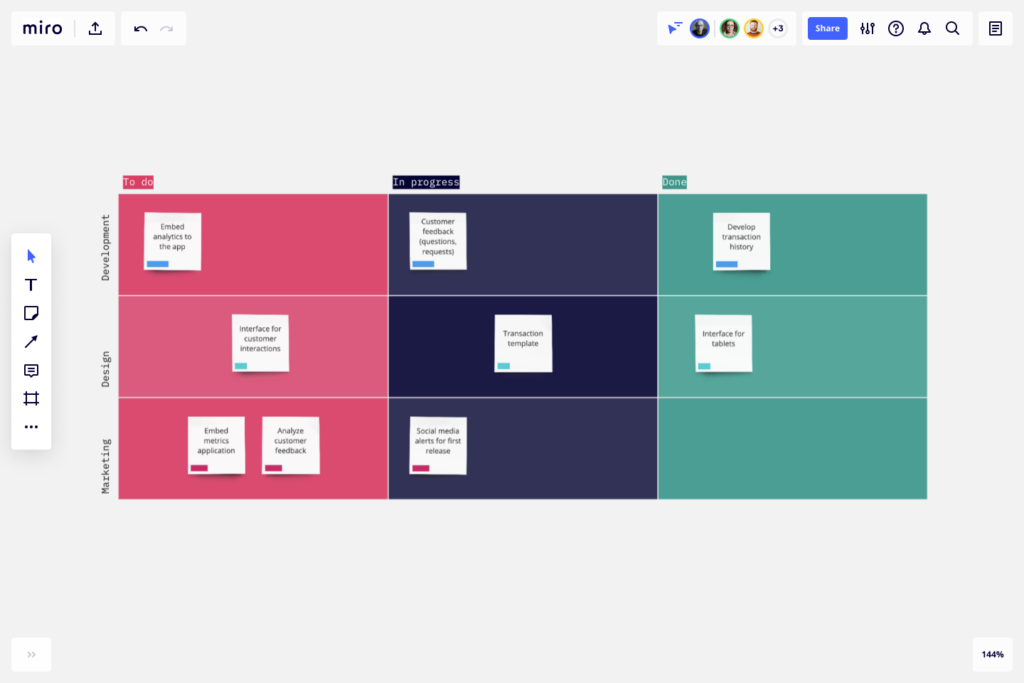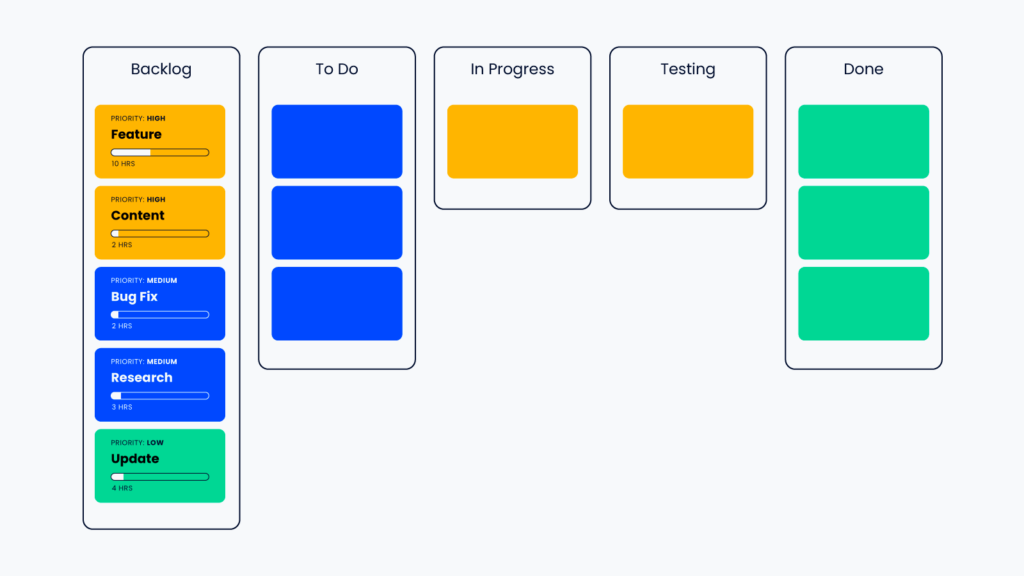If there's one thing that can be said about modern software development, it's that there are plenty of options for choosing how to approach the project.
Two popular methods for software delivery are Kanban vs agile, with each having its own set of advantages—but what exactly sets them apart? Here I'll cover key differences so you can decide which method is right for your team.
Key Differences: Kanban vs Agile
There are several key differences between Kanban and agile:
| Kanban | agile | |
| Focus: | Focuses on process improvement | Focuses on product delivery |
| Use case: | Best suited to incremental changes | Best suited for larger-scale projects |
| Roles: | Does not require specific roles or job titles within teams | Has specific roles like Scrum master or product owner |
| Tasks: | The team works on one task at a time until completed | May involve multiple tasks being completed at once |
| Workflow: | Emphasizes continuous flow and limits the number of tasks in progress | Focuses on iterative cycles that divide tasks into sprints |
| Systems: | Utilizes pull systems and has work-in-progress limits | Relies on push systems with no limit to work-in-progress |
| Method: | Focuses on visualizing workflows and limiting work in progress | Encourages collaboration and frequent feedback |
| Timeframe: | Not tied to specific project timeframes | Requires sprints and iterations |
What Is Kanban?
Kanban is a Japanese word that means "signboard" or "billboard." It is a method of workflow planning and task management that works by linking tasks together in a Kanban board, which allows users to quickly progress from one process to another.
Assigned tasks are often visual representations such as Kanban cards, and are kept within the board for organization and follow-up purposes. This streamlined approach can be thought of as an ‘anti-lean’ process, where each step is taken to deliver maximum efficiency and value every time.
With the Kanban method, teams have seen vast improvements in time management and job satisfaction due to the clarity of assignments and improved transparency within their working environment.
What Is Agile?
Agile project management is a methodology that emphasizes collaboration, user feedback, and rapid response to change. It involves breaking down projects into smaller, manageable parts, allowing teams to adapt and evolve their work processes as the project progresses.
Beyond agile principles such as continuous improvement, continuous delivery, iteration, and product backlog maintenance, the agile methodology involves several stages such as release planning, sprints, reviews, and retrospectives.
By using agile strategies at each step of the software development process, agile teams are able to achieve maximum effectiveness in their projects while maintaining a high degree of control over quality assurance.
Is Kanban Part Of Agile?
Throughout the software development world, there is often talk of agile methodologies and the benefits they provide. What some might not realize, however, is that Kanban can be considered a subset of agile methodology.
Those familiar with Kanban recognize it as a flexible and innovative visualization tool, complete with its own set of rules and components such as Kanban boards, cards, and works to facilitate workflow organization.
Used in conjunction with agile principles, Kanban provides an easy-to-visualized way to tackle projects large or small efficiently. By bringing together these two proven strategies, it makes sense why they have become such popular approaches among development teams today.
Agile Principles vs Kanban Principles
Though I've highlighted the key differences and thoroughly went over each one individually above, let’s quickly brush up on agile and Kanban principles:
Agile Principles
- Creating working software is of primary importance. The objective is to achieve customer satisfaction by continuously releasing improvements
- Stakeholders and the development team work daily until project completion, increments are time-boxed durations ranging 14 to 30 days
- Changes are welcome at all stages of a project
- Promotes sustainable development
- Focus on technical expertise
Kanban Principles
- The flow of work is visualized and easily understandable
- Boosts leadership across all levels
- Collaboration gets improved and becomes measurable
- The existing work process including roles and responsibilities is taken into account
- Progress is easily visible to the team and stakeholders
Agile Board vs Kanban Board
Agile boards and Kanban boards are two popular project management methods used by product managers and project managers.
Both of these boards can be used to manage entire projects, but they have different approaches on how to get the job done. Understanding the differences can help you determine which method is best for your team.
Agile Board
An agile board is a visual representation of tasks that need to be completed according to a sprint timeline. A sprint is a predetermined amount of time (usually 2–4 weeks) in which a development team works towards completing specific tasks or goals. During this period, tasks are broken down into smaller chunks, which are tracked using an agile board.
The board will often include columns like ‘To Do’, ‘In Progress’, ‘Done’, and ‘Blocked’ so that team members can easily see what needs to be done, who is responsible for it, and when it needs to be completed.
This approach allows teams to stay focused on their goals while also allowing them flexibility as they move through each sprint cycle.

Kanban Board
A Kanban board is similar to an agile board in that it also uses cards and columns for a visual representation of tasks that need to be completed.
However, instead of organizing the tasks based on a sprint timeline, the tasks are organized according to priority levels—usually high priority (most urgent), medium priority (not urgent), and low priority (not very important).
This helps teams prioritize their work more effectively since each task is assigned its own level of importance. Teams can set limits on how much work should be done at any given time so that they don't overwhelm themselves.

Kanban Tools vs Agile Tools
Depending on which agile framework you choose in the end, you will have different requirements regarding your Kanban vs agile tools and therefore for the software you will use to manage your project.
Given that Kanban and agile methodologies such as Scrum are very popular and widely used in software development, all major tools can support both options. Here is a vetted selection of the best Kanban software:
When To Use Kanban vs Agile
In summary, when it comes to deciding between Kanban and agile, it can be difficult to know which option will work best for your project. Thankfully, while the two are different, they both have their own strengths.
| Use Kanban when: | You require a visual representation of how your workflow is progressing. | With its use of metrics, the Kanban method ensures tasks are allocated correctly and distributed efficiently. |
| Use agile when: | You need a flexible approach that adjusts quickly to unexpected changes. | With its iterative approach and feedback loops involved at each step of development, agile is more responsive to changes. |
Understanding these strengths and the key differences between Kanban and agile is crucial for any project manager looking to implement either one. While they may seem similar at first, the devil is in the details—and those details can mean success or failure for your software development project.
As always, we’re here to help, so be sure to subscribe to The Digital Project Manager newsletter for more on how to deliver successful software projects!


